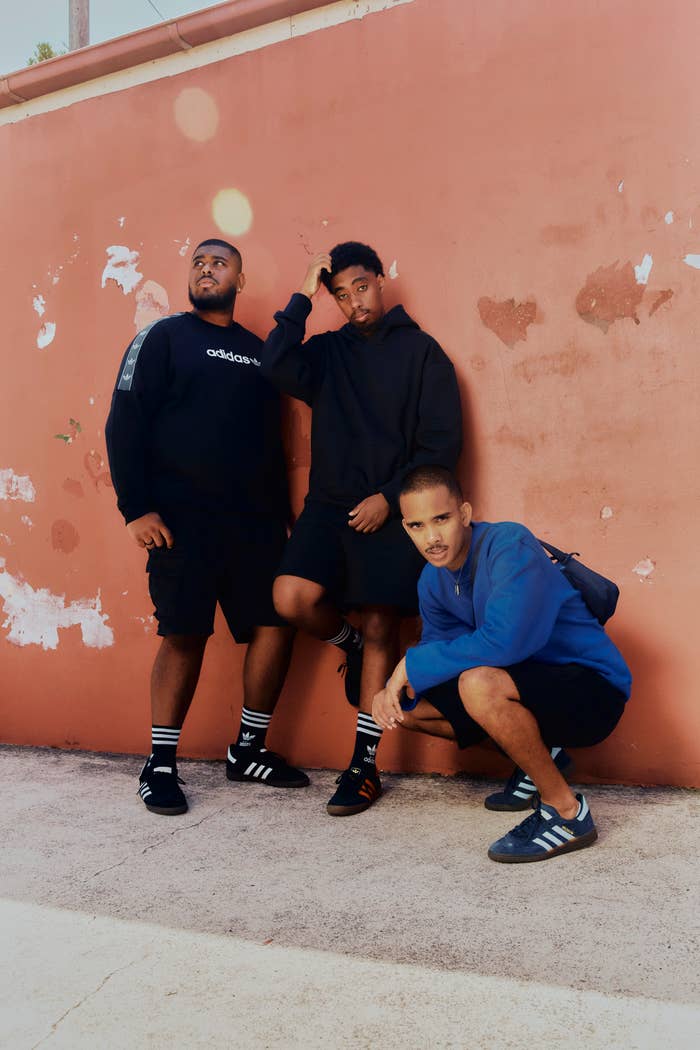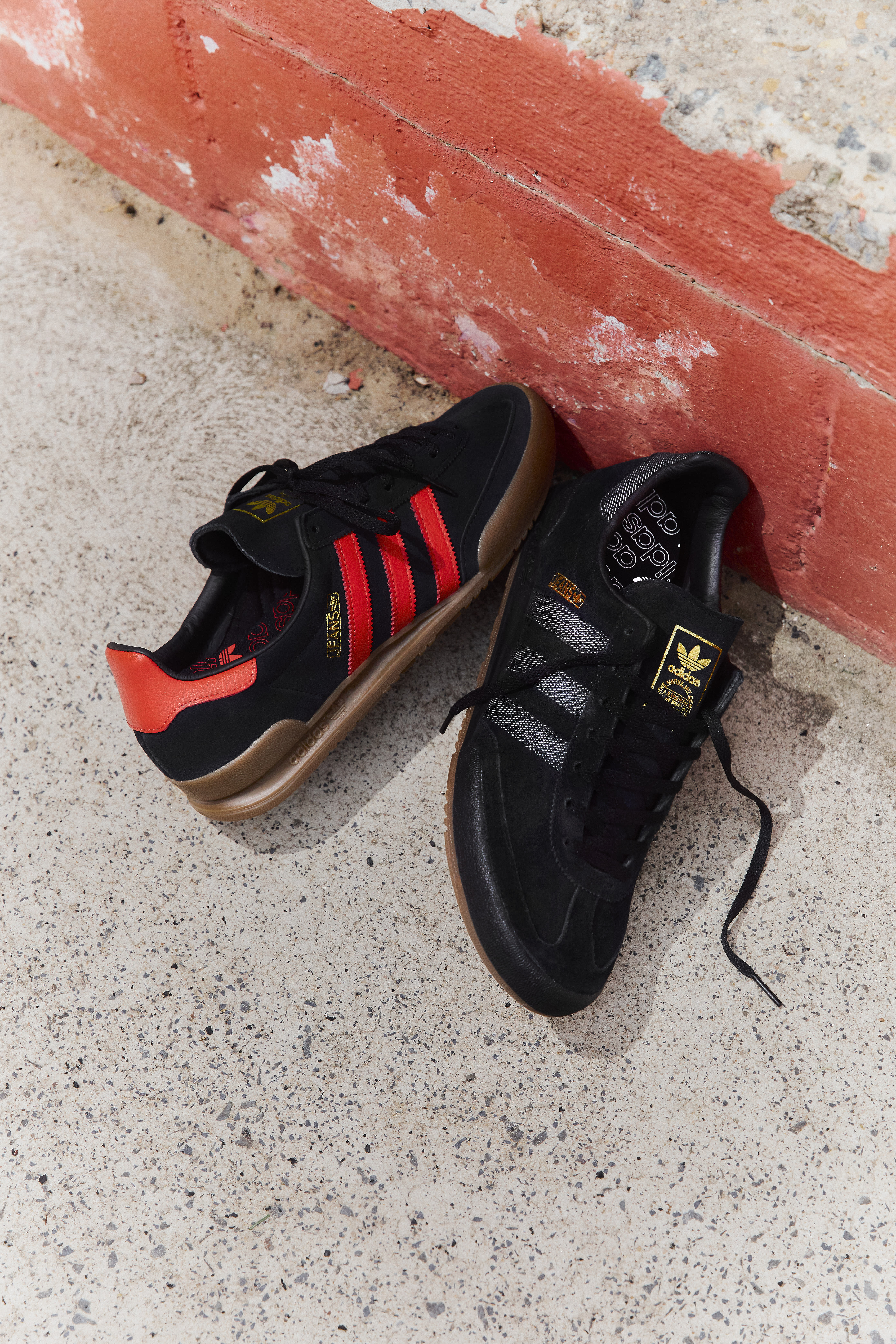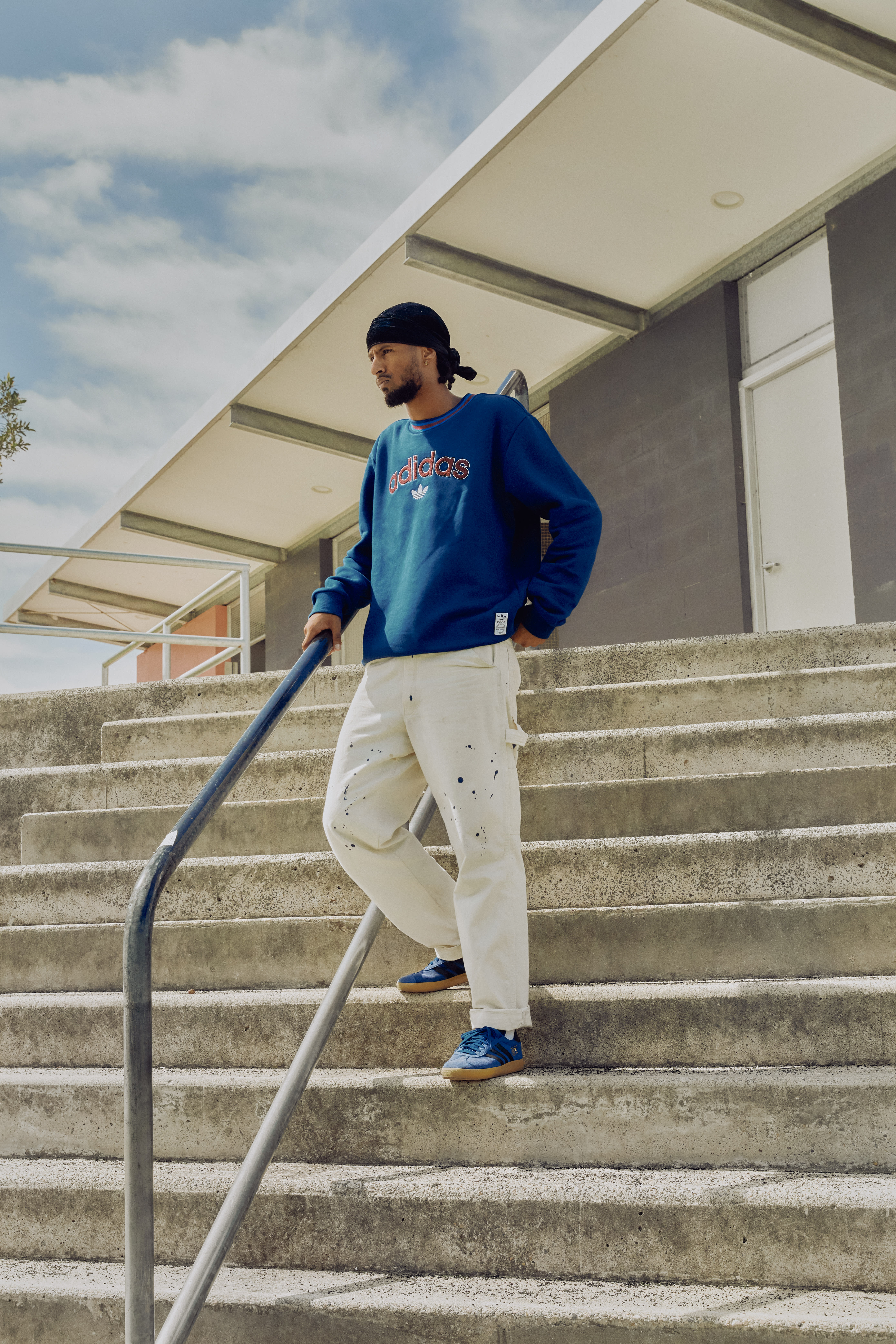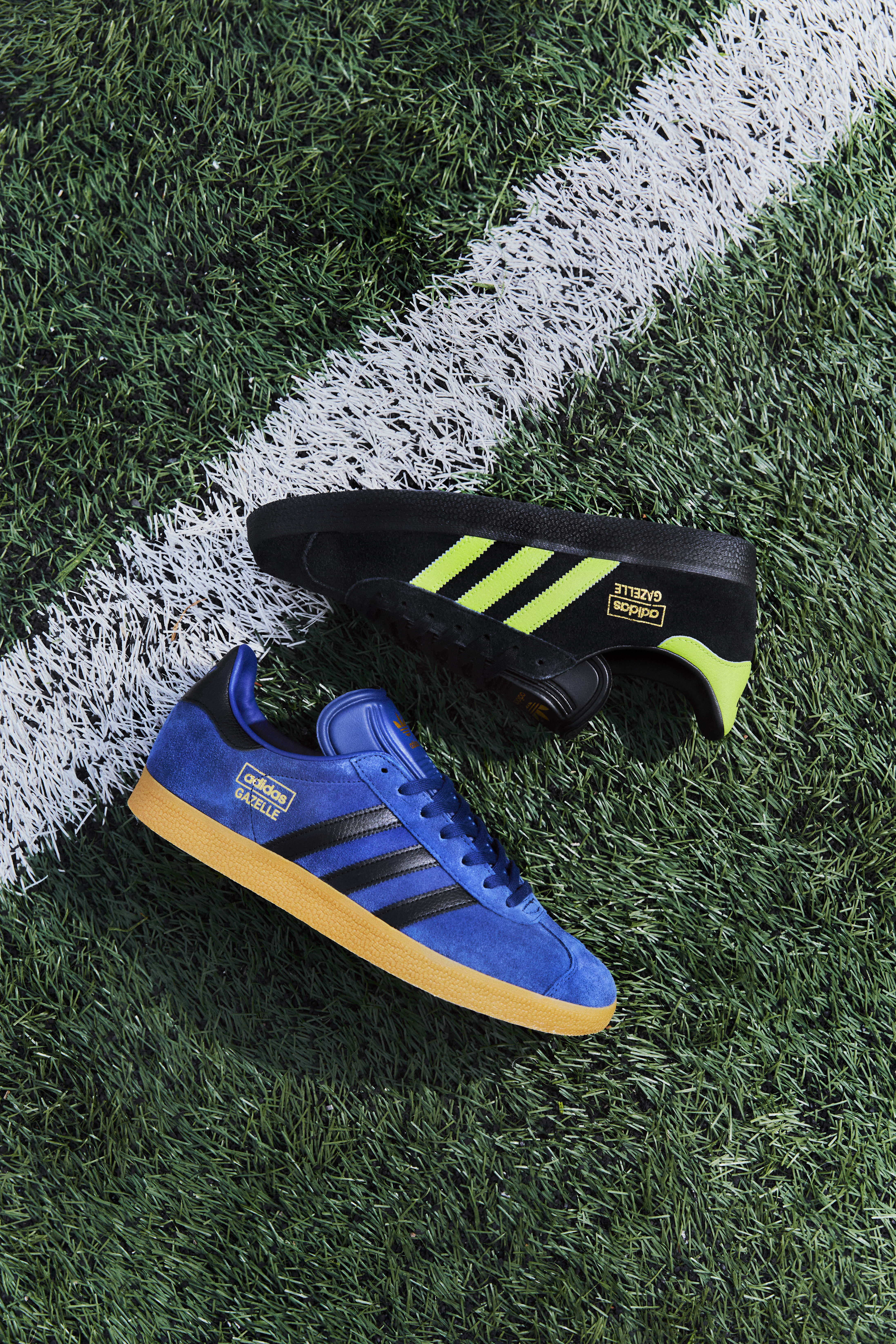Terrace culture’s adoption of gum sole sneakers was one of the first notable sneaker movements to emerge outside of the US back in the 70s. While New Yorkers were rocking Adidas Superstars, kids living on the outskirts of London flipped the sneaker world upside down when they started donning Gazelles and Stan Smiths.
Many decades later, terrace culture—and the iconic gum-sole silhouettes famously associated with it—have become global phenomena. The whole world is copping Adidas gum soles, and they’re considered staples in today’s closets. But despite being ubiquitous on the streets, terrace shoes can still be notoriously hard to find in stores. If you’ve missed your chance to cop them recently, fear not; JD Sports have just released an exclusive Adidas Terrace collection, accompanied by a short film featuring Melbourne collectives Let Em Shoot and RIDDIM.

For all the hype terrace silhouettes receive these days, historically, they haven’t always been so well loved. In fact, the popularity of shoes such as the Gazelles, Munchens, Spezials, Sambas and Stan Smiths can be attributed to their adoption by English sneaker and fashion renegades in the 70s—a group known as “the casuals”—who are credited as being Europe’s first sneaker heads. But who were the casuals? And where did they come from? To understand who they were and how terrace silhouettes made a meteoric rise, you have to first understand terrace culture—in all of its glory.
What exactly is terrace culture?
Terrace culture emerged in the 70s and is synonymous with the UK’s working class. In the 70s, football stadiums in the UK didn’t have seats, but instead, terraces—where fans would stand for the entirety of the game. This might not sound appealing to sports fans today, but for spectators of the time, football was (and still is) life. So unsurprisingly, standing up for a game surrounded by fellow fans, drinking pints, and chanting slurs at the opposing team and their fans was what they lived for—and it became known as terrace culture.
Terrace culture is still very much alive and well in the UK, and these days in pretty much any country with a football league. Most clubs have an extreme group of fans who identify as “ultras”, many of whom devote their lives to their club. Week in week out, the ultras are the most intense group of fans inside and outside the stadium—leading chants, lighting flares, and banging their drums. Essentially, terrace culture is a gang mentality tied to football clubs. And it’s so real.

Terrace fashion and Adidas’ influence on terrace culture
As is the case with many subcultures, out of terrace culture emerged its own culture of fashion and trends that thrived alongside all the terrace antics. “Terrace fashion” was pioneered by those embedded in terrace culture who became known as “the casuals”.
The casuals supported teams like Liverpool at the height of their success in the 70s and 80s and would travel weekly to support their team wherever they played—dispersing their style throughout the rest of Europe. While football teams have kits, the casuals’ uniform consisted of Adidas creps: Gazelles, Stan Smiths, Sambas and Spezials, and brands like Stone Island, Lacoste, and FILA.

For the casuals, Terrace culture and fashion was all about imprinting their identity onto clothing and shoes that nobody else was wearing. The Stan Smiths and Gazelles were never intended to be popular lifestyle shoes, nor cultural beacons associated with football culture. Rather, they were mostly intended for athletes and rich people playing sports. After not getting the love they deserved from those groups, they were adopted into an accepting home by the casuals, most of whom were of working-class backgrounds. The shoes provided an identity to a group that didn’t feel represented by the extant sneaker culture, and subsequently, gum-soles became the lifestyle shoe and the glue between football and street culture. For the causals, wearing the sneakers was important, but of equal importance was the mindset and attitude you embodied while having them on foot.
The casuals associated with the terraces of the 70s and 80s, as well as the stands of today, have contributed immensely to modern fashion—they’ve stamped their cultural authority on streetwear and refuse to be overlooked by brands. The streets have long proven that they’re the eternal trendsetters; that’s where the stories are, and that’s where true authenticity comes from.

Terrace culture down under
This has all lead us to today. In recent years, gum-soles and terrace silhouettes have made a huge resurgence. Stan Smiths have reached an unprecedented height of worldwide popularity, as have the Sambas, with the rise of TikTok fashion. Iconic Adidas terrace silhouettes such as the Spezials, Munchens and BC Trainers are everywhere. In our own backyard, Melbourne collectives Let Em Shoot and RIDDIM have teamed up with JD Sports to create a short film that embodies what the Adidas Terrace Collection represents in Australia, and highlights football culture down under in its uniqueness.
Congruent with the rise of Terrace silhouettes—Australia’s A-League has also grown in both popularity and stature in the last few years. It’s attracted high calibre names since the early 2000s such as Dwight Yorke in 2005, David Villa in 2014 and Daniel Sturridge in 2021. In particular, the signing of Allesandro Del Piero to Sydney FC back in 2012 was a move that went on to have a huge impact on the A-League, putting Australia on the football map.

Much like everywhere else, Australia’s football culture has evolved to have its own football ultras, casuals and hooligans—all of whom are carrying the torch of terrace culture and redefining what it means down under. Football is now massive here too, and so are the rivalries that come with it.
Take Melbourne back in January, when Melbourne Victory fans stormed the pitch during the Melbourne derby. Flares were lit, and the game was subsequently called off. Fans were appalled when the FA announced that the next 3 Grand Finals would be hosted in Sydney, so, in true hooligan fashion—they rebelled. What followed was 80 flares and fireworks, 29 arrests, and five people who sustained injuries—including the Melbourne City goalkeeper, the referee, security guards, and camera crew. In just over 20 minutes, the fans racked up six figures worth of damages. It was described as the worst invasion in Australian football history, and changed the way A-League games are policed. One needs no further proof that terrace culture and football hooliganism is still in full force today, and will continue to be for as long as football exists.
You can shop the Terrace collection in store and online at JD Sports.

